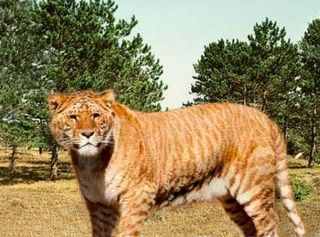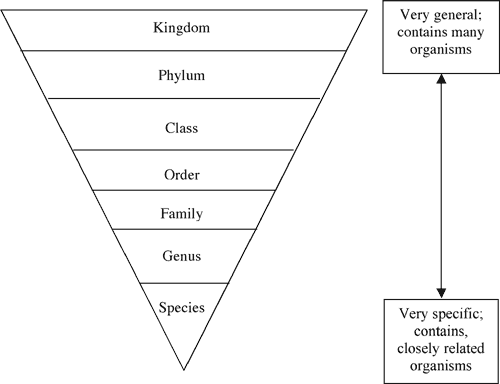
- •Lesson (1) Principles of classification of living organisms
- •Lesson (2) Modern classification of living organisms
- •Lesson (3) Kingdom Animalia
- •Answer four questions only
- •Letter (a)
- •Letter (b)
- •Letter (c)
- •Letter (d)
- •Letter (e)
- •Letter (f)
- •Letter (g)
- •Letter (h)
- •Letter (j)
- •Letter (k)
- •Letter (l)
- •Letter (m)
- •Letter (n)
- •Letter (o)
- •Letter (p)
- •Letter (r)
- •Letter (s)
- •Letter (t)
- •Vougheir
- •Vultures
![]()
Lesson (1) Principles of classification of living organisms

Living organisms are similar in functional and structural unit (Cell) and properties of life (Feeding, growth, reproduction, respiration, movement, sensation, excretion). But they are different in many things (Ex. life way – shape – structure – nutrition – the way of reproduction).
Due to the diversity of living organisms, the need of classification process emerged. The science which studies the classification of living organisms is called Taxonomy
Taxonomy (Classification): The science which studies the arrangement of living organisms according to their similarities and differences, which facilitates their study
Greek philosopher Aristotle (lived 2300 years ago) was the first to classify animals into red-blooded and bloodless animals. He classified plants into shrubs, weeds and trees
Modern taxonomy depends mainly of the definition of species
Species: A group of individuals having the same morphological characteristics which interbreed producing similar fertile individuals
Tigon
When female lion (lioness) and male tiger cross, they produce the so-called tigons. Tigons are infertile and cannot reproduce

Fig. (1) Tigon
Mule
When a male donkey and female horse cross, they produce the so-called mules.
Mules are also infertile and cannot reproduce

Fig. (2) Mule
From the previous examples, we conclude that neither mule nor Tigon can be called species because they cannot interbreed (cross) and produce new fertile individuals.
![]()
A living organism has different names in different languages, to overcome this problem, scientist Carl Linnaeus created a system to name living organisms, this system is called Binomial system, which is written in Latin language.
In binomial system, every organism has a binomial name, which is composed of two names:-
- 1st name: The name of genus, it begins with a capital letter
- 2nd name: The name of species, it begins with a small letter
Binomial names are written in Latin language in italics or underlined to be differentiated.
Linnaeus used Latin language because it is an old language not spoken by people, which protects it from any change or modification
Example:-
The scientific name (binomial name) of cat is Felis domesticus
- Felis is the name of genus, it means "Cat" in Latin
- Domesticus is the name of species, it means "domestic" in Latin
![]()
There are sevens classification levels in taxonomy, every level contains less animals with more similarity in characteristics, these levels are:-
1- Kingdom: contains a number of phyla (Singular phylum)
2- Phylum (Pl. Phyla): Represents a number of classes
3- Class: Contains a number of orders
4- Order: Contains a number of families
5- Family: Contains a number of genuses
6- Genus: Contains a number of species
7- Species: It contains individuals capable of producing fertile individuals
There are other groups between each two successive groups of the previously-mentioned levels (Ex. sub-phylum, sub-order, sub-family, sub-genus)

![]()
Dichotomous key: A series of characteristics arranged in pairs which helps the user determine the species of an unknown organism.
Dichotomous key begins with wide characteristics, and they become less more specific and definite as the level of the key increases. In each step, you can choose between two characteristics on basis of the living organism you search for.

Fig. (3) Dichotomous key of some insects
![]()
Taxonomy (Classification): The science which studies the arrangement of living organisms according to their similarities and differences
Species: A group of individuals having the same morphological characteristics which interbreed producing similar fertile individuals
Dichotomous key: A series of characteristics arranged in pairs which helps the user determine the species of an unknown species
![]()
1- The scientific importance of taxonomy (classification)
Because it deals with the arrangement of living organisms according to their differences and similarities, which facilitates their study.
2- The formation of tigons
Due to the interbreed of a female lion and male tiger
3- The formation of mules
Due to the interbreed of a male donkey and female horse
4- Neither tigons nor mules are species
Because both of them are infertile and cannot produce new fertile individuals, as they are resulted from the crossing of organisms of different species
5- The importance of binomial system of naming living organisms
Because it gives each organism a special scientific name, which overcame the problem of the difference of its names in different languages.
6- In binomial system, organisms names are derived from Latin language
Because Latin is an old language not spoken by people, which protects it from change or modification
7- The importance of dichotomous key
Because it helps us determine the species of an unknown organism through its characteristics
![]()
1- A female lion and male tiger interbreed (cross)
Tigons are formed, which are organisms incapable of reproduction.
2- A female donkey and a male horse cross
Mules are formed, which are organisms incapable of reproduction
